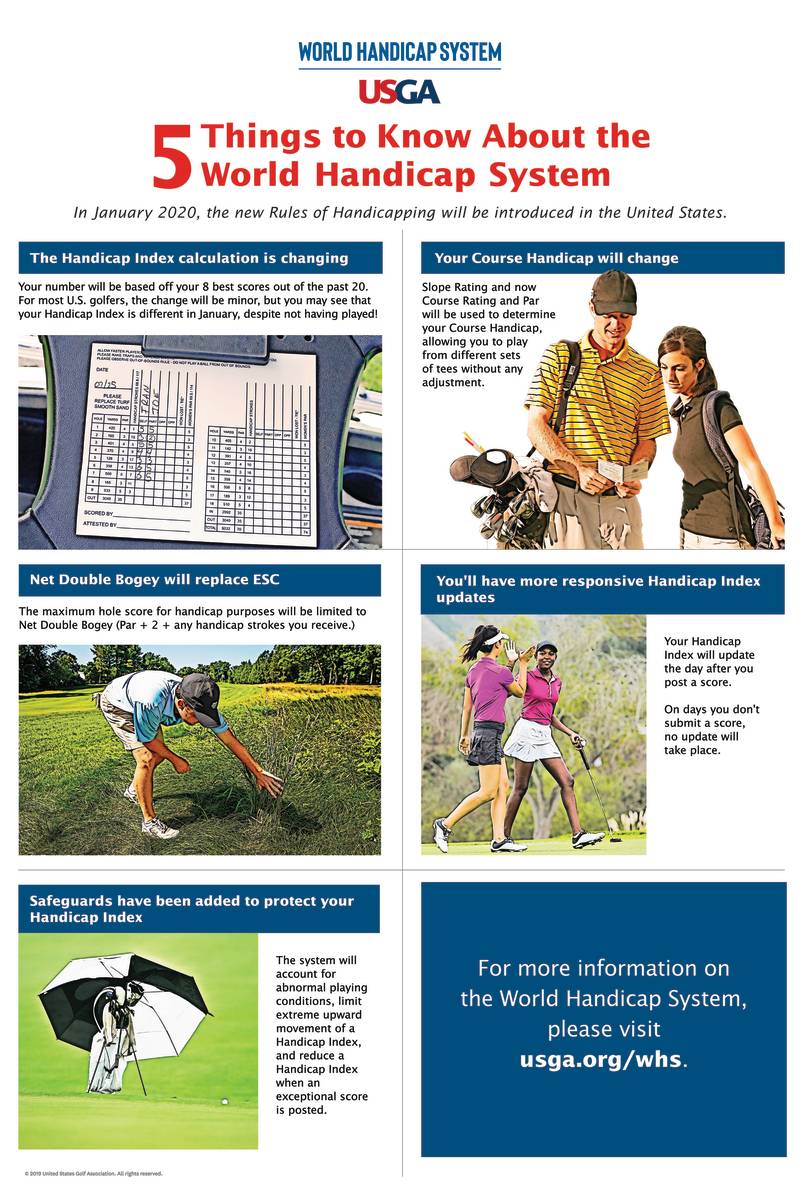 TAMPA, Fla. – The World Handicap System is set to debut in 2020 and will allow golfers to play on an equitable and fair basis around the globe. This new system will include a number of new concepts and terms for golfer around the world to learn.
TAMPA, Fla. – The World Handicap System is set to debut in 2020 and will allow golfers to play on an equitable and fair basis around the globe. This new system will include a number of new concepts and terms for golfer around the world to learn.
Here are five things to know.
Your Handicap Index may change
But that’s ok! Finally, players around the world will have an apples-to-apples handicap. Your new Handicap Index will be more responsive to good scores by averaging your eight best score out of your most recent 20 (currently, it’s 10 out of 20 with a .96 multiplier). In short, your Handicap Index will be determined by your demonstrated ability and the consistency of scores. In most cases for golfers in the U.S., it will change less than one stroke.
You need to know your Course Handicap
In the new system, your Course Handicap will be the number of strokes needed to play to par. This will result in greater variance in that number and presents a change, as historically it has represented the number of strokes needed to play to the Course Rating. This is a good thing, as par is an easy number to remember. Target score for the day? Par plus Course Handicap. The Course Rating will now be inherent within the calculation to be more intuitive and account for competing from different tees.
Net Double Bogey
The maximum hole score for each player will be limited to a Net Double Bogey. This adjustment is more consistent from hole to hole than the Equitable Stroke Control procedure. Net Double Bogey is already used in many other parts of the world and the calculation is simple: Par + 2 + any handicap strokes you receive.
Your Handicap Index will be revised daily
One way that handicapping is being modernized is a player’s Handicap Index will update daily (which will provide a fairer indication of a player’s ability in the moment), if the player submitted a score the day before. On days where the player does not submit a score, no update will take place.
Safeguards in the new system
The new system will limit extreme upward movement of a Handicap Index, automatically and immediately reduce a Handicap Index when an exceptional score of at least 7 strokes better is posted, and account for abnormal course or weather conditions to ensure that scores reflect when a course plays significantly different than its established Course Rating and Slope Rating. These safeguards help maintain accuracy of a Handicap Index, greater integrity within the system and promote fun and fair play for golfers of all abilities
Follow the FSGA:
Twitter: @FSGA
Instagram: @FSGA1913
Facebook: Florida State Golf Association





